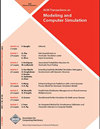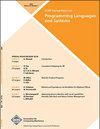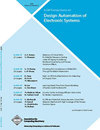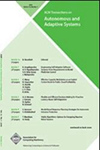期刊简介
Frontiers in Neurorobotics publishes rigorously peer-reviewed research in the science and technology of embodied autonomous neural systems. Specialty Chief Editors Alois C. Knoll and Florian Röhrbein at the Technische Universität München are supported by an outstanding Editorial Board of international experts. This multidisciplinary open-access journal is at the forefront of disseminating and communicating scientific knowledge and impactful discoveries to researchers, academics and the public worldwide.Neural systems include brain-inspired algorithms (e.g. connectionist networks), computational models of biological neural networks (e.g. artificial spiking neural nets, large-scale simulations of neural microcircuits) and actual biological systems (e.g. in vivo and in vitro neural nets). The focus of the journal is the embodiment of such neural systems in artificial software and hardware devices, machines, robots or any other form of physical actuation. This also includes prosthetic devices, brain machine interfaces, wearable systems, micro-machines, furniture, home appliances, as well as systems for managing micro and macro infrastructures. Frontiers in Neurorobotics also aims to publish radically new tools and methods to study plasticity and development of autonomous self-learning systems that are capable of acquiring knowledge in an open-ended manner. Models complemented with experimental studies revealing self-organizing principles of embodied neural systems are welcome. Our journal also publishes on the micro and macro engineering and mechatronics of robotic devices driven by neural systems, as well as studies on the impact that such systems will have on our daily life.
《神经机器人学前沿》发表了在具身自主神经系统的科学和技术方面的严格同行评审研究。专业主编Alois C.Knoll和Florian Röhrbein在慕尼黑工业大学的工作得到了由国际专家组成的杰出编辑委员会的支持。这本多学科开放获取的杂志是在传播和交流科学知识和影响力的发现,研究人员,学术界和世界各地的公众的前沿。神经系统包括大脑启发算法(如连接网络)、生物神经网络的计算模型(例如人工脉冲神经网络、神经微电路的大规模模拟)和实际生物系统(例如体内和体外神经网络)。该杂志的重点是这种神经系统在人工软件和硬件设备、机器、机器人或任何其他形式的物理驱动中的体现。这还包括假肢设备、脑机接口、可穿戴系统、微型机器、家具、家用电器以及用于管理微观和宏观基础设施的系统。《神经机器人学前沿》还旨在出版全新的工具和方法,以研究可塑性和自主自学系统的发展,这些系统能够以开放的方式获取知识。模型与实验研究相结合,揭示了具身神经系统的自组织原理,是受欢迎的。我们的杂志还发表了由神经系统驱动的机器人设备的微观和宏观工程和机电一体化,以及这些系统将对我们日常生活产生影响的研究。
《Frontiers in Neurorobotics》期刊已被查看: 次









